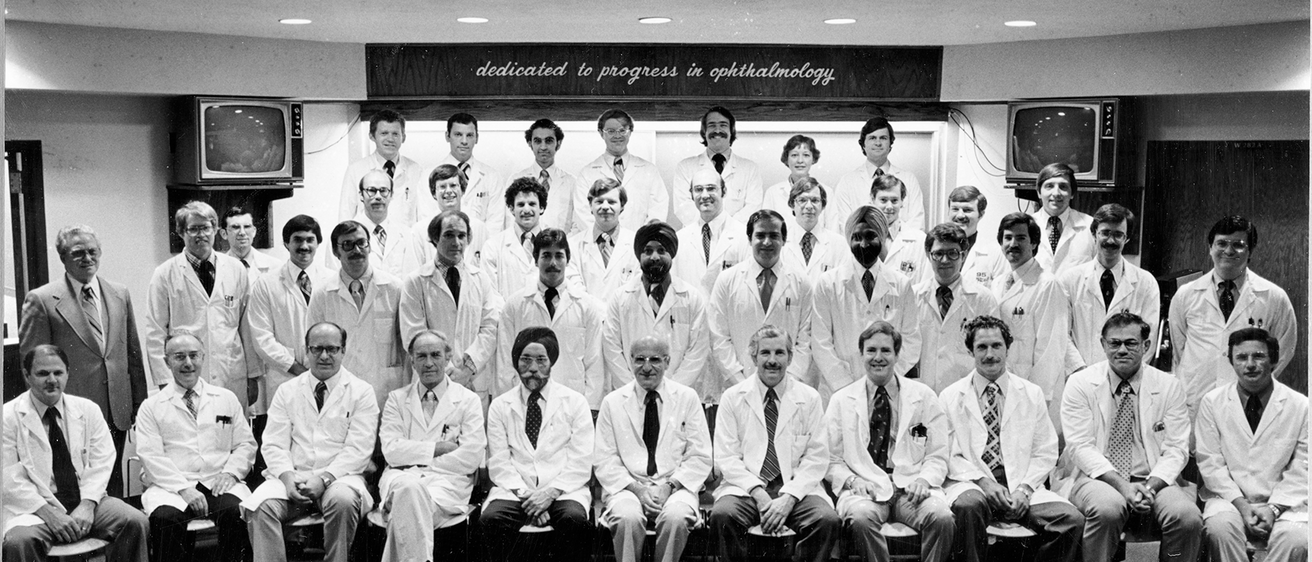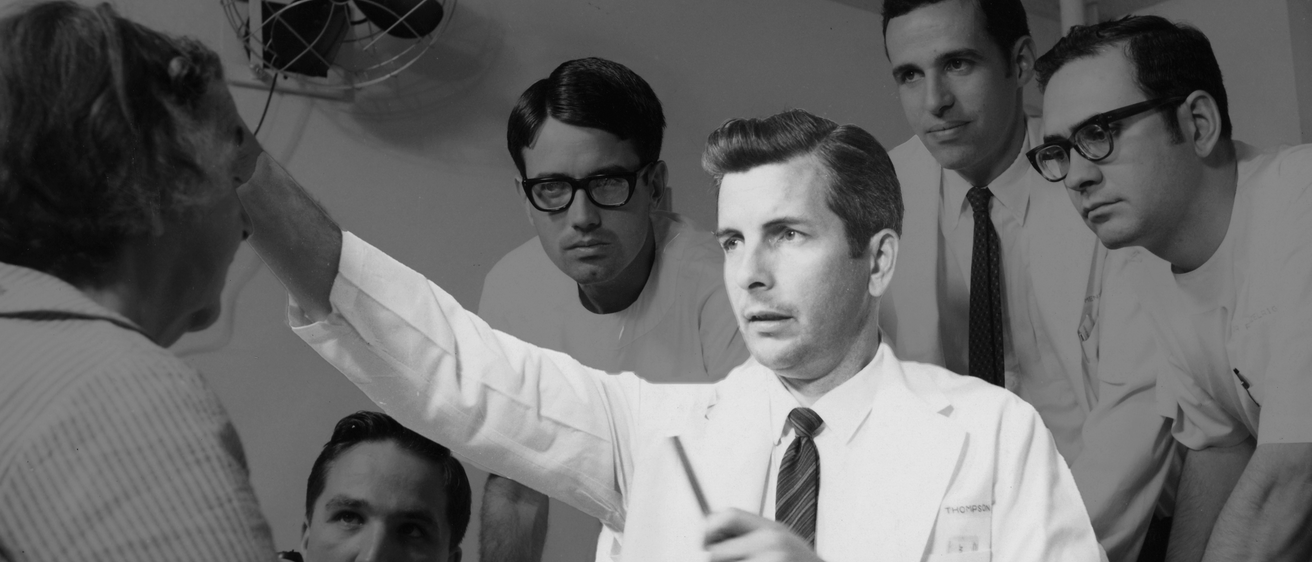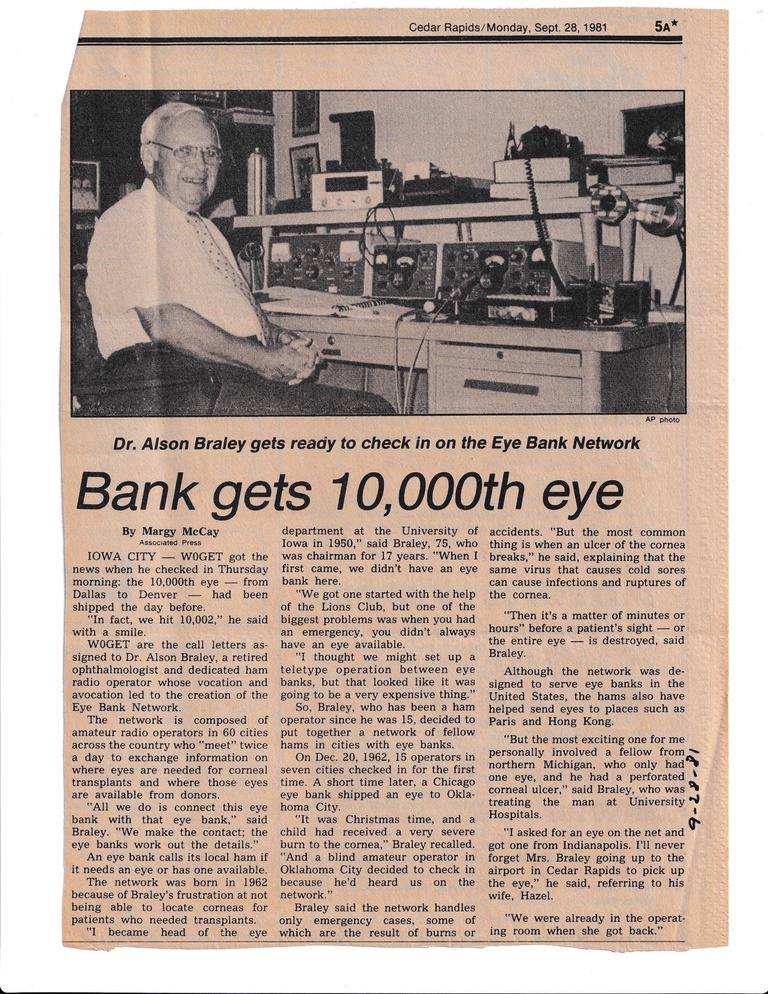Main navigation
The period from 1975 to 1984 was a transformative era for the University of Iowa's Department of Ophthalmology. Under the leadership of Dr. Frederick C. Blodi, who served as department chair from 1967 to 1984, the department solidified its reputation as a leader in ophthalmic care, research, and education. This decade saw significant advancements in clinical services, research, infrastructure, and community outreach, positioning the department at the forefront of ophthalmology.
Jump to a specific section...
Advancements in Clinical Services and Research Educational Excellence Facilities Expansion Community Outreach
Leadership and Faculty Development
Dr. Blodi, an internationally recognized expert in ocular pathology, played a pivotal role in expanding the department’s scope and influence. His leadership fostered an environment of excellence, attracting top-tier faculty and securing substantial research funding. The department’s faculty made significant contributions to both clinical and academic ophthalmology, ensuring that the University of Iowa remained a hub for innovation and discovery.
Notable Faculty Added During This Period
Richard Anderson (1976)
James Corbett (1977)
James Folk (1982)
Frank Judisch (1975)
Edward Perkins (1979)
David Tse (1983)
Thomas Weingeist (1976)
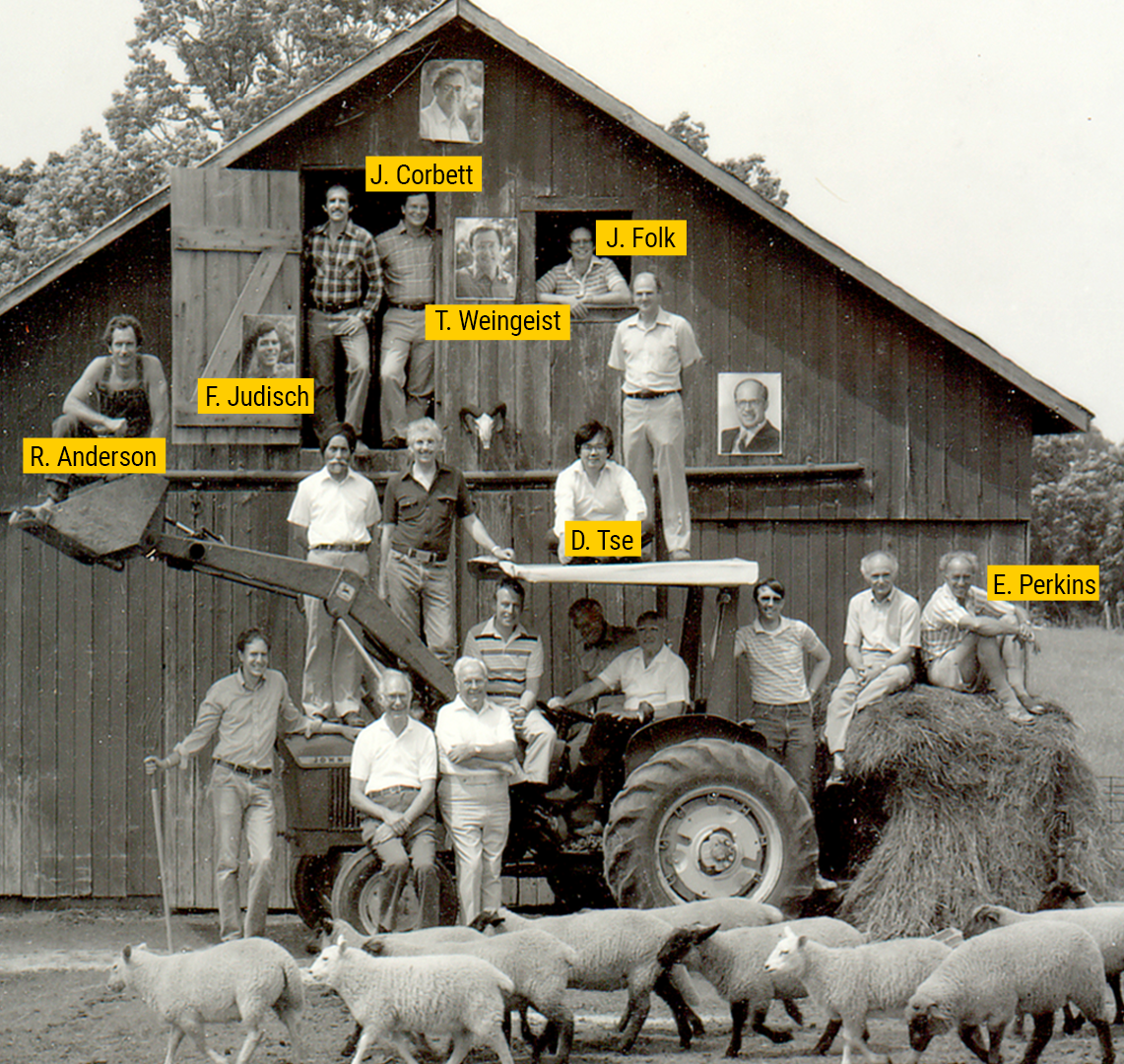
Blodi's faculty in 1983 at Stan Thomson's farm.
Educational Excellence and Training the Next Generation
The residency program at the University of Iowa remained one of the most sought-after in the country, attracting top medical graduates. It was during this era that the department continued to expand subspecialty fellowship offerings. While some subspecialties, like retina and glaucoma, had accepted fellows sporadically before Blodi's tenure as chief, it was in the 1970s that most subspecialties at Iowa were accepting fellows on a consistent basis. The fellowships that began under Blodi's leadership include: Cornea-External Disease (1972), Echography (1972), Neuro-Ophthalmology (1969), Ocular Pathology (1967), Oculoplastics (1978), Pediatric Ophthalmology (1973), and Vascular Disease (1976).
Beyond formal training, the department hosted national and international conferences, symposia, and continuing medical education (CME) courses. These events facilitated knowledge exchange among ophthalmologists worldwide, ensuring that faculty and trainees remained at the forefront of emerging trends and innovations in the field.
Advancements in Clinical Services and Research
The department broadened its clinical services during this period, ensuring that patients had access to specialized ophthalmic care. Subspecialty clinics flourished, with key advancements in retinal diseases, glaucoma management, pediatric ophthalmology, and corneal transplantation. The development of innovative surgical techniques and treatments, including vitrectomy and laser photocoagulation for retinal diseases, significantly improved patient outcomes.
Research also saw remarkable progress, with faculty securing substantial funding from the National Institutes of Health (NIH) and other granting agencies. Pioneering studies in retinal degenerative diseases, intraocular lenses, and cataract surgery led to groundbreaking treatments. The department also made major strides in glaucoma research, particularly in understanding genetic factors and developing early diagnostic techniques that later became standard practice in the field.
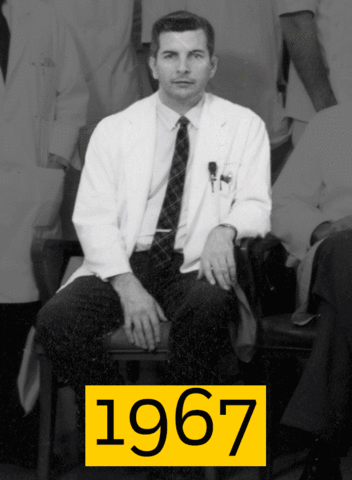
H. Stanley Thompson, M.D. was the first neuro-ophthalmologist at the University of Iowa, joining in 1967. Born in 1932 in China to missionary parents, he spent much of his early life there before being interned in a Japanese-run camp during World War II. After the war, his family moved back to Ireland, where he completed secondary school before relocating to Minnesota in 1948.
Dr. Thompson began his college education at the University of Minnesota but transferred to Wheaton College, where he met and later married Delores Johnson. Drafted into the U.S. Army, he worked as a photographer before becoming a naturalized citizen in 1955. Returning to Minnesota, he pursued medical studies at the University of Minnesota, earning his M.D. in 1961.
He completed his ophthalmology residency at the University of Iowa, where he trained in neuro-ophthalmology and pupil function. A fellowship at the University of California, San Francisco, under William F. Hoyt, M.D., deepened his expertise. In 1967, he returned to Iowa as faculty, focusing on neuro-ophthalmology. Over time, he transitioned from general ophthalmology to exclusively seeing neuro-ophthalmology patients.
Dr. Thompson spent six months training in London in 1971 before returning to Iowa to establish a neuro-ophthalmology fellowship program. His research primarily focused on pupil function, leading to significant contributions on topics such as Adie's syndrome. Many of his trainees cherished his famous napkin sketches used during discussions in the hospital cafeteria.
During his tenure at the University of Iowa, Dr. Thompson played a crucial role in expanding the neuro-ophthalmology program, training over 40 fellows and mentoring numerous residents. His expertise in pupil disorders and neuro-ophthalmology led to groundbreaking research on afferent pupillary defects and related conditions. He was instrumental in shaping the department’s approach to neuro-ophthalmic education and research, fostering a collaborative environment for innovation.
Dr. Thompson was an active leader in the ophthalmology community, serving as co-president of the International Neuro-Ophthalmology Society in 1988 and chairing the American Board of Ophthalmology in 1996. He organized and participated in numerous professional conferences, sharing his knowledge and advancing the field. His contributions solidified the University of Iowa’s reputation as a leading center for neuro-ophthalmology.
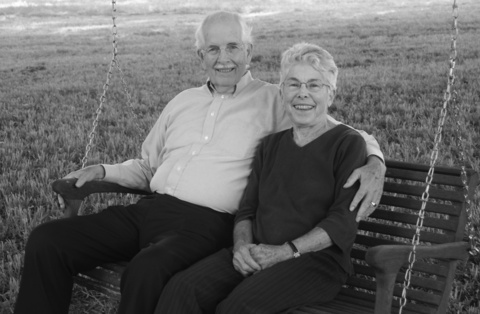
Beyond medicine, Dr. Thompson and his wife raised five children on their Iowa farm, hosting annual gatherings for faculty and staff, complete with tractor rides, games, and social events. His collaboration with Dr. James Corbett further strengthened the neuro-ophthalmology program at Iowa, lasting until Dr. Corbett’s departure in 1990.
After 30 years at the University of Iowa, Dr. Thompson retired in 1997, having trained over 40 fellows and served in leadership roles within various professional organizations. In retirement, he pursued his passion for history, particularly the history of ophthalmology, contributing to publications on the subject.
Infrastructure and Facilities Expansion
Significant enhancements to the department’s facilities supported its growth. In 1979, a major renovation and expansion project added new examination rooms, surgical suites, and research laboratories, accommodating the increasing number of patients and research initiatives. By 1983, new laboratories dedicated to advanced ophthalmic research enabled faculty to conduct cutting-edge studies in areas such as ocular genetics, pharmacology, and surgical techniques.
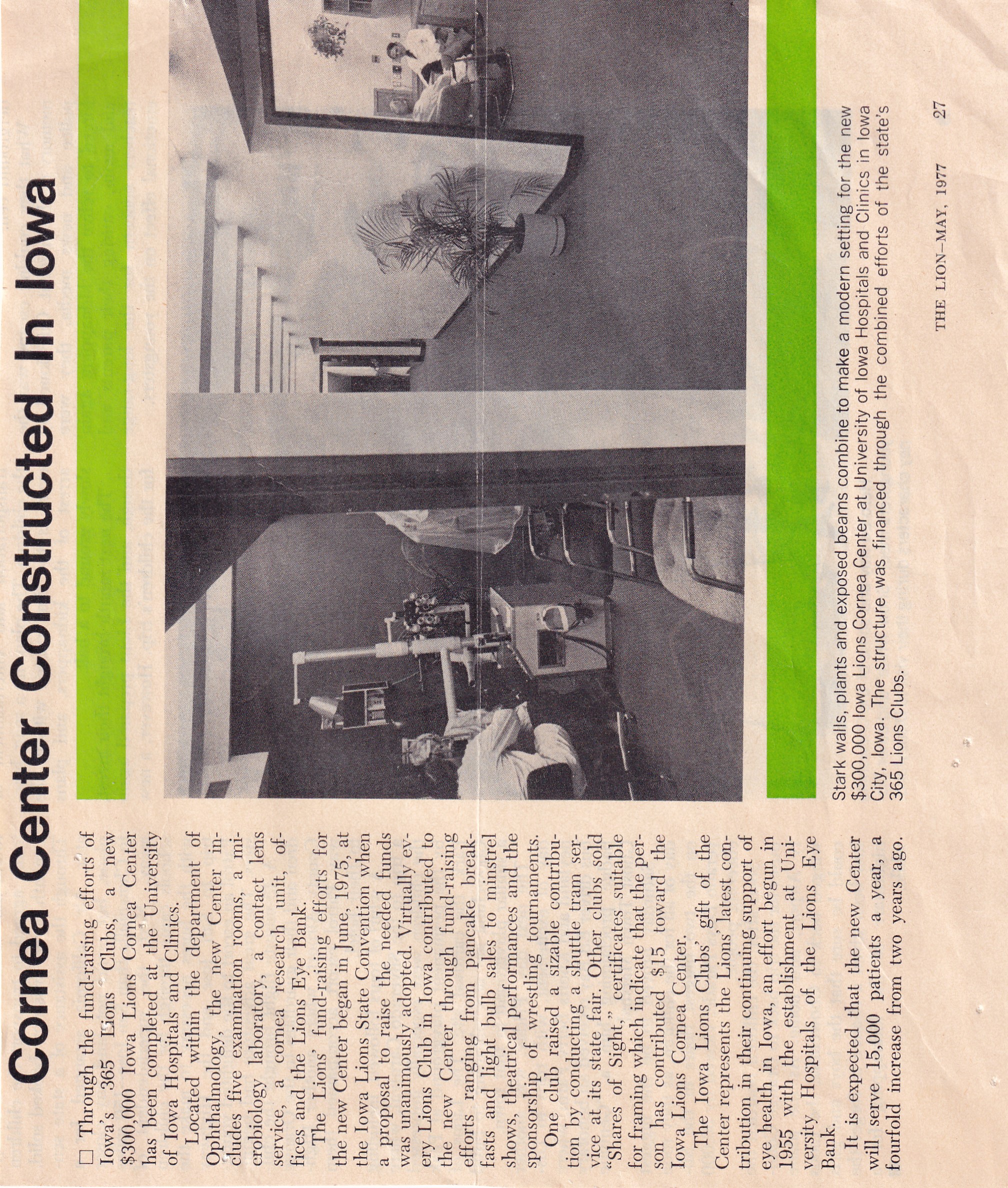
In 1977, the new Cornea Center was completed with support coming from Iowa's 365 Lions Clubs.
Community Outreach and Public Engagement
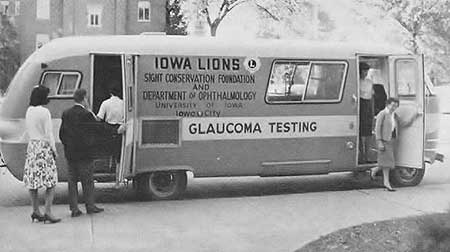
The department remained deeply committed to serving the community. In 1980, it launched programs aimed at providing eye care services to underserved populations across Iowa. These initiatives included free eye screenings, educational workshops, and mobile eye clinics that brought vision care to rural areas. Additionally, the department collaborated with the Iowa Lions Eye Bank, playing a key role in advancing corneal transplantation and donor eye tissue preservation techniques.
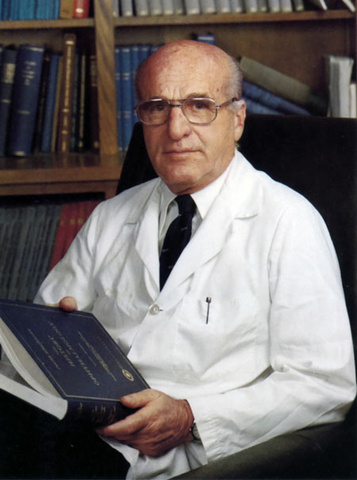
By the time Dr. Blodi stepped down as department chair in 1984, he had left an indelible mark on the field of ophthalmology. His leadership positioned the University of Iowa’s Department of Ophthalmology as a premier institution for research, education, and patient care. The advancements made during this decade laid the foundation for future innovations, ensuring the department’s continued influence in shaping the future of ophthalmology. The legacy of innovation, education, and service established during these years remains a cornerstone of the department’s ongoing mission to improve vision care worldwide.
